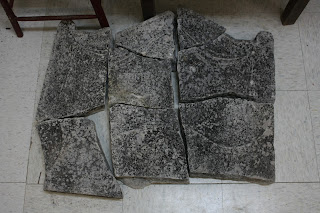 |
| Courtesy of The Rooms provincial Archives. Circa 1948 |
 |
| Courtesy of Crystal Braye; via The Downhomer |
Earlier this week I asked for some of your Purity memories. Here are some of the lovely stories I received:
Being raised by Newfoundlanders in Ontario gave Purity products an extra special place, especially around Christmastime. Purity Syrup was a Christmas staple, along with a variety of Purity candies and treats. One Christmas, when I was about nine or ten years old, we had some of our neighbours over for a visit - including eleven-year-old Patrick, who I had a huge crush on at the time. Wanting to share my special Newfoundland Christmas treats, I offered Patrick a "Newfie Kiss," [I don't remember exactly what they were, but my parents called them "Newfie Kisses"]. Unfortunately, Patrick didn't realize I was referring to a candy and got a look of disgust on his face when he thought I was going to kiss him. He refused a Newfie Kiss and kept his distance for the rest of the night.- Crystal Braye
 |
| Courtesy of Crystal Braye; via The Downhomer |
I was a crew chief on the series Road To Avonlea and Wind At My Back, both Sullivan productions on CBC about 16 years ago. It was not part of my job but the set decorators used Purity products on the shelves in any shots of the stores in these series. They were used because of there dated labels. -Frank Noseworthy
I remember going to my Nan's house and there were always some peppermint knobs, in a little glass dish, tucked away in the kitchen cupboard. I loved it when she took that dish down and gave me one. Little did I know, these peppermint knobs were often there quite a while and would get pretty soft. I actually didn't know until I was much older that peppermint knobs were a hard candy! I liked them better Nan's way anyway.-Nicole Penney
If you'd like to read more about Purity Factories Limited check out this great little piece from The Collegian, 1933 (pp.25-27) that describes a tour of the factory.
 |
| The Daily News, Jan.1, 1956 |
Merry Christmas and have a happy and prosperous New Year!





















